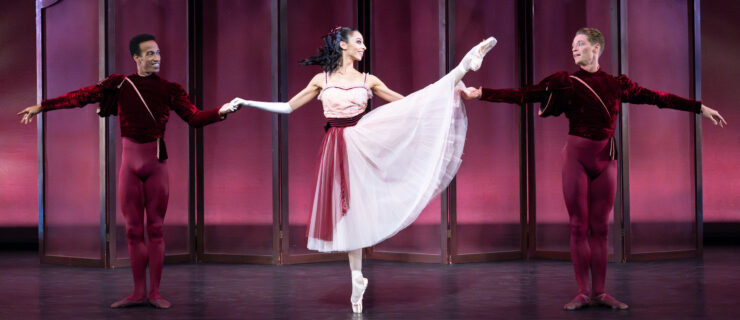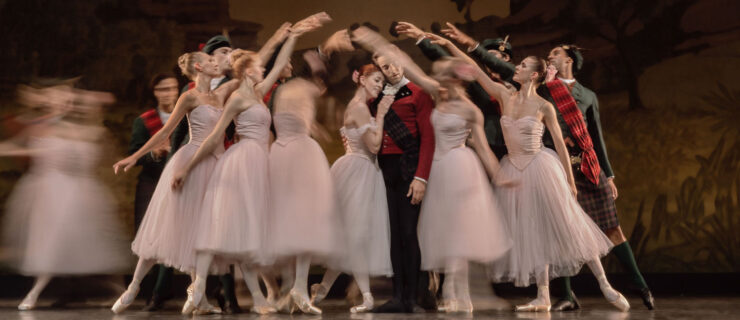The Danger Zone
Dancers are highly disciplined by nature. But young performers sometimes fall into bad habits without even realizing it. Or they focus so completely on getting results that they simply ignore the consequences. Take a look at our list of all-too-common risky behaviors—you might see your reflection in the mirror.
1. Replacing food with supplements
Like most of us, dancers look for shortcuts. But relying on supplements as a primary source of nutrition is one of the biggest errors a dancer can make. “The purpose of supplements is to supplement your food intake,” says Peggy Swistak, a nutritionist who works with Pacific Northwest Ballet. “Dancers will go to the health food store and someone tells them they need extra iron or B vitamins. Even the Vitamin Waters: There is one for energy, sleep, weight control or the immune system.” Dancers aren’t chemists, and fooling around with supplements can lead to overdosing. Instead of relying on pills and potions, you should be getting your nutrition and energy from food. Play it safe: Take one multi-vitamin/mineral supplement to cover your bases and eat a variety of nutritious foods.
2. Forcing your arch
Trying to achieve the perfect foot with a beautifully stretched arch often becomes an all-consuming affair for dancers. So what do they do? Place their feet under the couch, have a friend sit on their toes or hang on to the barre and force all their weight onto an overstretched arch. Ouch! If you do these exercises, “you’re likely to overstretch the tendons and ligaments which provide stability to the foot and ankle,” says Amy Humphrey, a physical therapist who works with The Washington Ballet. This is bad news, since ligaments don’t heal on their own. Overstretching will forever make your ankles more susceptible to common ballet injuries such as sprains.
A smarter solution is to work on the mechanics of your point. “If a dancer can just point her foot using her ankle, then just her mid-foot and finally her toes, then she has a better chance of being able to stretch her feet,” says Humphrey. If you still have trouble, it might be due to stiff joints. Consult a physical therapist for specific solutions.
3. Fasting during the day
Many dancers try to stay slim by eating very little during the day. But that tactic only leaves you feeling ravenous after dark. “Then there’s a lot of night eating that can lead to weight gain,” says Swistak. “You end up overdoing it on foods like chocolate, peanut butter or crackers.” It becomes a vicious cycle: no breakfast, an apple for lunch and then binging at night—and waking up the next morning not feeling hungry. Dancers who fall prey to this also end up with little energy to dance, hurting their performance in the studio and onstage, and increasing the risk of injury. Swistak says the simple solution is to reverse your schedule: “Eat during the day and diet at night.”
4. Skipping cardio
Today’s dancers know the benefits of cross-training. However, during company layoffs or school breaks, they typically overlook this part of their regimen. “Some do Gyrotonics and Pilates, but they often forget cardio training,” says Humphrey. And when they return to the studio, they find they’ve lost the stamina to get through rehearsal.
This is such a big problem that some companies even offer financial incentives to keep up your cardio training. Every year at The Washington Ballet, dancers go through a fitness screening—and those who pass receive a bonus. “They needed to excel in cardiovascular fitness and upper body strength to get a bonus this year,” says Humphrey. Plan time in your weekly schedule for cardio, which can include running, using the elliptical trainer (easy on the joints), swimming, rowing or doing step aerobics.
5. Sneaking a smoke
Casual smoking often seduces dancers into a dangerous tango. It seems safe enough, because you aren’t a regular “smoker.” And many dancers are attracted to smoking because it can act as a weight deterrent. But consider the consequences: According to medical experts, there is no safe level of exposure to cigarettes. Even indulging at parties or during stressful performance seasons puts you at risk for such illnesses as emphysema, strokes, heart attacks and lung cancer. And casual smoking can still be addictive. If you are craving, consider a nicotine patch, acupuncture, hypnosis, an online support group or asking your physician about drugs like Bupropion, which helps curb smoking addiction.
6. Warming up improperly
When dancers enter the studio, many immediately plop into a second position split or other extreme stretches. But if your muscles aren’t warm, stretching can strain or tear them. “I see this most in my adolescent preprofessional dance students,” says Humphrey. The point of a warm-up is to get your blood flowing and prepare your muscles for action. Always start your pre-class warm-up by increasing your heart rate with exercises such as barre work, Pilates, jogging, crunches or even jumping rope. It will be safer—and easier—to work on flexibility once blood is flowing to your muscles.
7. Not being able to cook
You don’t have to be Julia Child, but get some basic cooking skills. When dancers are on their own or
living with other students, the easiest way out is to get fast food, which can lead to weight gain. Cooking Light magazine gives light, easy recipes and health and exercise tips. Rachael Ray’s “30 Minute Meals” cookbook can be helpful for ideas to whip up fast, practical meals. And the Food Network has plenty of tips as well. Bon appétit!
And break those destructive habits. Treat your body with care—it’s your instrument.
Former American Ballet Theatre dancer Joseph Carman contributes to several dance publications.





